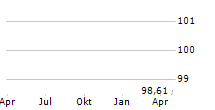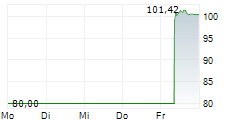- Phase III trial for KLU156 (ganaplacide/lumefantrine, or GanLum), meets primary endpoint of non-inferiority to standard of care Coartem® (artemether-lumefantrine)
- Demonstrates PCR-corrected cure rate of 97.4% based on estimand method, equating to 99.2% under conventional per protocol analysis
- If approved, GanLum would represent first major innovation in malaria treatment since 1999, with potential to kill drug-resistant parasites and block transmission
- Novel ingredient in GanLum, ganaplacide, has entirely new mechanism of action, discovered after screening 2.3 million molecules
- Highlights Novartis long-term commitment to combating malaria, with more than 1.1 billion treatment courses of Coartem provided largely at no profit, and multiple novel antimalarial compounds in development
Basel, November 12, 2025 - Novartis today announced positive results from KALUMA, a Phase III study for new malaria treatment KLU156 (ganaplacide/lumefantrine, or GanLum). The novel non-artemisinin antimalarial, which was developed with Medicines for Malaria Venture (MMV), met the study's primary endpoint of non-inferiority to the current standard of care. The treatment achieved a 97.4% PCR-corrected cure rate using an estimand framework, compared to 94.0% with standard of care. This equates to cure rates of 99.2% and 96.7% respectively based on conventional per protocol analysis.
The trial studied 1,688 adults and children across 34 sites in 12 African countries, with GanLum given as a sachet of granules once a day for three days. Additional analysis indicated the treatment was highly effective against mutant malaria parasites associated with partial drug resistance. The treatment was also found to have a rapid response against mature gametocytes, the sexual stage of the parasite's lifecycle responsible for onward transmission.
The findings come amid urgent calls to tackle the growing threat of antimalarial drug resistance in Africa.1 Data were presented at the American Society of Tropical Medicine and Hygiene annual meeting 2025.2
"GanLum could represent the biggest advance in malaria treatment for decades, with high efficacy against multiple forms of the parasite as well as the ability to kill mutant strains that are showing signs of resistance to current medicines," said Dr Abdoulaye Djimdé, Professor of Parasitology and Mycology at the University of Science, Techniques and Technologies of Bamako, Mali. "Drug resistance is a growing threat to Africa, so new treatment options can't come a moment too soon."
GanLum is a combination of two compounds, attacking the malaria parasite on multiple fronts: ganaplacide, a novel compound with an entirely new mechanism of action, and a new once-daily formulation of existing antimalarial lumefantrine, a longer-acting treatment.
Ganaplacide is understood to work by disrupting the parasite's internal protein transport systems, which are essential for its survival inside red blood cells.3 It belongs to a class of compounds called imidazolopiperazines, first identified as potential antimalarials after a groundbreaking screen of 2.3 million molecules to find drug candidates at Novartis labs in San Diego, California.
"Drug-resistant parasites threaten the efficacy of medicines that have helped to control malaria for decades," said Shreeram Aradhye, M.D., President, Development and Chief Medical Officer, Novartis. "Together with our partners, we've gone further to develop a new class of antimalarial with an entirely new mechanism of action, which has the potential to both treat the disease and block transmission. We look forward to working with health authorities to bring this innovation to patients as soon as possible, helping close a critical gap in malaria care for those who need it most."
Novartis plans to seek regulatory approvals from health authorities for GanLum as soon as possible. The combination therapy was granted Fast Track Designation and Orphan Drug Designation by the U.S. Food and Drug Administration in 2022. If authorized by regulators, GanLum would represent the first major innovation in malaria treatment since artemisinin-based combination therapies, the current gold standard treatments, were introduced more than 25 years ago.4
The treatment was developed by Novartis with the scientific and financial support of MMV, and within the framework of the WANECAM2 consortium, which is funded by the European & Developing Countries Clinical Trials Partnership (https://urldefense.com/v3/__https:/www.edctp.org/__;!!N3hqHg43uw!ouNFvS7qyVz8ZE2FOyM5rfk-qFSAxTXGtocGOhfiP5OYazUJcuXqvnKBet7MJ95U97rEgB4cDc6H_H-0hA$) Programme supported by the European Union, with co-funding from the German Aerospace Center and the UK Department of Health and Social Care.
"Antimalarial drug resistance is a ticking clock-without action today, lives will be lost," said Dr Martin Fitchet, CEO of MMV. "GanLum's Phase III results are a key step towards a new tool to help stay ahead of resistance. Working with Novartis and our partners, we're committed to turning this promise into impact."
About the KALUMA study
The KALUMA (NCT05842954) study was a Phase III randomized, open-label, multicenter study to compare efficacy, safety and tolerability of GanLum with Coartem® (artemether-lumefantrine), the standard of care, in the treatment of acute, uncomplicated malaria due to Plasmodium falciparum in adults and children. The trial studied 1,668 adults and children = 10kg with acute, uncomplicated malaria due to Plasmodium falciparum, with or without mixed plasmodium infection, at 34 trial sites across 12 countries in sub-Saharan Africa. Patients treated with GanLum were given a once-daily dose for three days, as a sachet of granules. The primary analysis was conducted using an 'estimand' approach, a conservative approach required to support regulatory submissions, which considers patients who discontinue the study or for whom PCR data is missing at the time of the primary analysis to have failed the treatment. A conventional 'per protocol' approach, which excludes these patients from the analysis, is the standard methodology used in clinical trials for antimalarials, and more easily allows for comparison to historical trials and other antimalarial drugs. The principal stratum estimand consisted of patients who took a complete course of study treatment (at least 80% of study medication) and took non-study treatment with antimalarial activity prior to day 29 only in case of recrudescence. Results found:
- GanLum was non-inferior to the standard of care, meeting its primary and key secondary endpoint.
- PCR-corrected adequate clinical and parasitological response at Day 29 (proportion of patients free from clinical symptoms and baseline parasites 28 days after the start of treatment, corrected by excluding new infections) was 97.4% for GanLum, compared to 94.0% with the standard of care. Under a conventional per protocol analysis, conducted post hoc, this represents a cure rate of 99.2%, compared to 96.7% with the standard of care.
- Uncorrected adequate clinical and parasitological response at Day 29 (proportion of patients free of clinical symptoms and any parasites 28 days after the start of treatment, regardless of whether a recurrence was due to recrudescence or new infection) was 85.3% for GanLum, compared to 82.1% for the standard of care.
- The safety profile was similar to standard of care and adverse events were generally consistent with the underlying disease.
About malaria
Malaria is a life-threatening disease caused by a parasite and spread to humans by some types of mosquitoes. According to the most recent WHO data, there were 263 million cases of malaria and 597,000 deaths in 2023, almost all of them in Africa. Children under 5 years old accounted for about three in four malaria deaths in the region.5
About Novartis in malaria innovation
Novartis has built the industry's largest pipeline of treatments to control or eliminate malaria and neglected tropical diseases,6 backed by nearly USD 500 million in funding for global health R&D since 2021. This includes four new non-artemisinin antimalarial compounds with the potential to combat rising drug resistance. Novartis has delivered more than 1.1 billion treatment courses of its antimalarial Coartem since 1999, mostly at no profit, and earlier this year launched Coartem Baby, the first malaria treatment for newborns and young infants.
About MMV
MMV is a Swiss non-profit product development partnership. MMV works "end-to-end" to discover, develop and deliver affordable and accessible medicines to treat, prevent and eliminate malaria. Since 1999, over 1.3 billion people have benefited from MMV's co-developed medicines. With malaria still killing 600,000 each year, MMV brings partners together to close the remaining gaps in antimalarial access and innovation.
For more information, visit www.mmv.org (http://www.mmv.org). Follow MMV on social media: X (https://twitter.com/MedsforMalaria), LinkedIn (https://www.linkedin.com/company/medicinesformalariaventure), YouTube (https://www.youtube.com/c/mmvorgmedsformalaria) and Facebook (https://www.facebook.com/medicinesformalaria)
Disclaimer
This press release contains forward-looking statements within the meaning of the United States Private Securities Litigation Reform Act of 1995. Forward-looking statements can generally be identified by words such as "potential," "can," "will," "plan," "may," "could," "would," "expect," "anticipate," "look forward," "believe," "committed," "investigational," "pipeline," "launch," or similar terms, or by express or implied discussions regarding potential marketing approvals, new indications or labeling for the investigational or approved products described in this press release, or regarding potential future revenues from such products. You should not place undue reliance on these statements. Such forward-looking statements are based on our current beliefs and expectations regarding future events, and are subject to significant known and unknown risks and uncertainties. Should one or more of these risks or uncertainties materialize, or should underlying assumptions prove incorrect, actual results may vary materially from those set forth in the forward-looking statements. There can be no guarantee that the investigational or approved products described in this press release will be submitted or approved for sale or for any additional indications or labeling in any market, or at any particular time. Nor can there be any guarantee that such products will be commercially successful in the future. In particular, our expectations regarding such products could be affected by, among other things, the uncertainties inherent in research and development, including clinical trial results and additional analysis of existing clinical data; regulatory actions or delays or government regulation generally; global trends toward health care cost containment, including government, payor and general public pricing and reimbursement pressures and requirements for increased pricing transparency; our ability to obtain or maintain proprietary intellectual property protection; the particular prescribing preferences of physicians and patients; general political, economic and business conditions, including the effects of and efforts to mitigate pandemic diseases; safety, quality, data integrity or manufacturing issues; potential or actual data security and data privacy breaches, or disruptions of our information technology systems, and other risks and factors referred to in Novartis AG's current Form 20-F on file with the US Securities and Exchange Commission. Novartis is providing the information in this press release as of this date and does not undertake any obligation to update any forward-looking statements contained in this press release as a result of new information, future events or otherwise.
About Novartis
Novartis is an innovative medicines company. Every day, we work to reimagine medicine to improve and extend people's lives so that patients, healthcare professionals and societies are empowered in the face of serious disease. Our medicines reach nearly 300 million people worldwide.
Reimagine medicine with us: Visit us at www.novartis.com (https://www.novartis.com/) and connect with us on LinkedIn (https://www.linkedin.com/company/novartis/), Facebook (https://www.facebook.com/novartis/), X/Twitter (https://twitter.com/Novartis) and Instagram (https://instagram.com/novartis?igshid=MzRlODBiNWFlZA==__;!!N3hqHg43uw!pjp8z253J5NjaOYrW65UbAAlHeHRdQ-w0m4ezZxEQEl0ptafXN2M99VRIk39pf49PAc8NbK93Pxp3uaSBQkAf8oEnzWXG8Sk$).
References
- Rosenthal, Philip J et al. The emergence of artemisinin partial resistance in Africa: how do we respond? The Lancet Infectious Diseases, Volume 24, Issue 9, e591 - e600.
- Winnips, C., et al. KALUMA - A pivotal Phase III trial to evaluate the efficacy, safety and tolerability of the novel anti-malarial drug ganaplacide-lumefantrine (KLU156) in uncomplicated malaria, Presented at Annual Meeting of the American Society of Tropical Medicine and Hygiene, November 12, 2025.
- LaMonte GM, et al. Pan-active imidazolopiperazine antimalarials target the Plasmodium falciparum intracellular secretory pathway. Nat Commun. 2020 Apr 14;11(1):1780; Brancucci NMB, et al. An all-in-one pipeline for the in vitro discovery and in vivo testing of Plasmodium falciparum malaria transmission blocking drugs. Nat Commun. 2025 Jul 25;16(1):6884; Gal IR, et al. Drug Interaction Studies of Cabamiquine:Ganaplacide Combination against Hepatic Plasmodium berghei. ACS Infect Dis. 2025 Jan 10;11(1):69-79.
- Premji ZG. Coartem: the journey to the clinic. Malar J. 2009 Oct 12;8 Suppl 1(Suppl 1):S3.
- WHO. Malaria (https://www.who.int/news-room/fact-sheets/detail/malaria). (https://www.who.int/news-room/fact-sheets/detail/malaria)
- Access to Medicine Foundation. Access to Medicine Index 2024 (https://accesstomedicinefoundation.org/sectors-and-research/index-ranking).
# # #
| Novartis Media Relations E-mail: media.relations@novartis.com (mailto:media.relations@novartis.com) |
| Novartis Investor Relations Central investor relations line: +41 61 324 7944 E-mail: investor.relations@novartis.com (mailto:investor.relations@novartis.com) |



